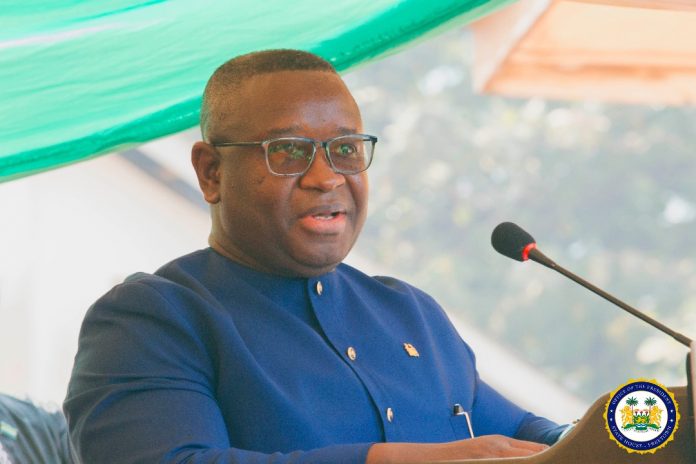By Amin Kef Sesay
With COVID-19 having reduced the annual growth rate to below 3%, with unemployment at a record high, with export earnings down, and with inflation at an unacceptable 10.5%, the Central Bank Governor has rightly said that the country’s economy is in stagflation mode.
He and other Central Government macroeconomists, however, predict that the downturn is cyclical, that the economy will bounce back once COVID-19 is behind us. The question is: how soon would that be?
FY 2020 to 2021 will go down as terrible years in the country’s economic trajectory – just as the Ebola years of 2014 to 2015 were. The drop in growth during these two periods was so swift and widespread that they both severely affected national income and expenditure, resulting in increased borrowing and debt.
Sierra Leone now growing at below 5% and with inflation reaching close to 11% is in danger of prolonged economic slowdown if macroeconomic policies are not recalibrated to stimulate growth.
The economy because of COVID-19 has seen a decline in growth. Investment remains down. With declining savings, it leaves very little financial savings for investment. People dipped into their savings to maintain consumption but that could not last for too long without investment and job creation.
The agricultural sector is also not doing well and rural wages are not rising as rapidly as earlier – therefore rural demand remains depressed. This is the first time all indicators are pointing down wards – usually you get a mixed picture.
Given the country’s needs and aspirations and a very rapidly growing young population – anything below 7% GDP growth is unacceptable and at least 9% is needed to reach the goal of at least Le10 trillion by 2025, with NRA raking in about Le6 trillion as at now.
The Government is under huge pressure to boost demand by breaching the fiscal deficit. The stagflation scenario of low growth and high inflation has caused the Government huge credibility.
More important than a fiscal boost is to re-orient Government expenditures towards a more developmental growth-oriented outcome i.e. lower the recurrent expenditures and increase capital expenditures and try to attract longer-term finance to maintain infrastructure investment.
Lower borrowing costs, cuts in subsidies (by rationalizing them) could provide some space for this improvement in the quality of expenditures.
Recovery in investment is key to recovery of the economy. This suggests that the Government needs to do aggressive reforms in paying of taxes – as well as labour and financial sector reforms. These should be accompanied by corporate tax cuts to boost investment.
Small tweaks and fixes will no longer be enough. In the next budget, given the limited space for short -term fiscal policy and having reached the limits of monetary policy, it is best to shift attention to structural and sectoral factors that will help drive the economy over the medium term.
Government should review its economic policy to boost exports and curtail unnecessary imports; as well as inverted duty structures.
The Government, through the commercial banks, could select 8-10 strategic light industries to promote in boosting the import substitution-manufacturing segment of the economy.
It can be easy and cost-effective to add trade promotion offices to our embassies abroad and consider how best to establish a strategic trade office. Government can also address the real exchange rate appreciation – which taxes exports and subsidizes imports. This is more effective than import tariffs.
For now, with COVID-19 having restricted international travel, we cannot talk about tourism and related mobility services as a huge source of job creation.






